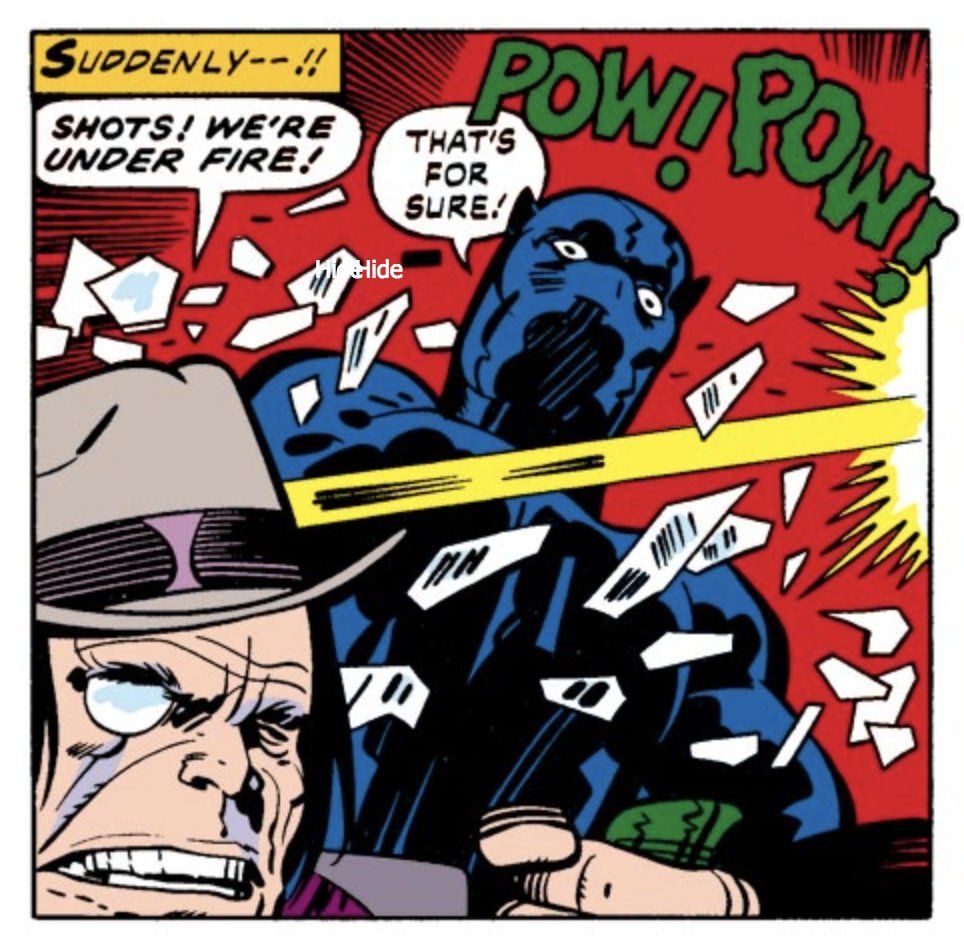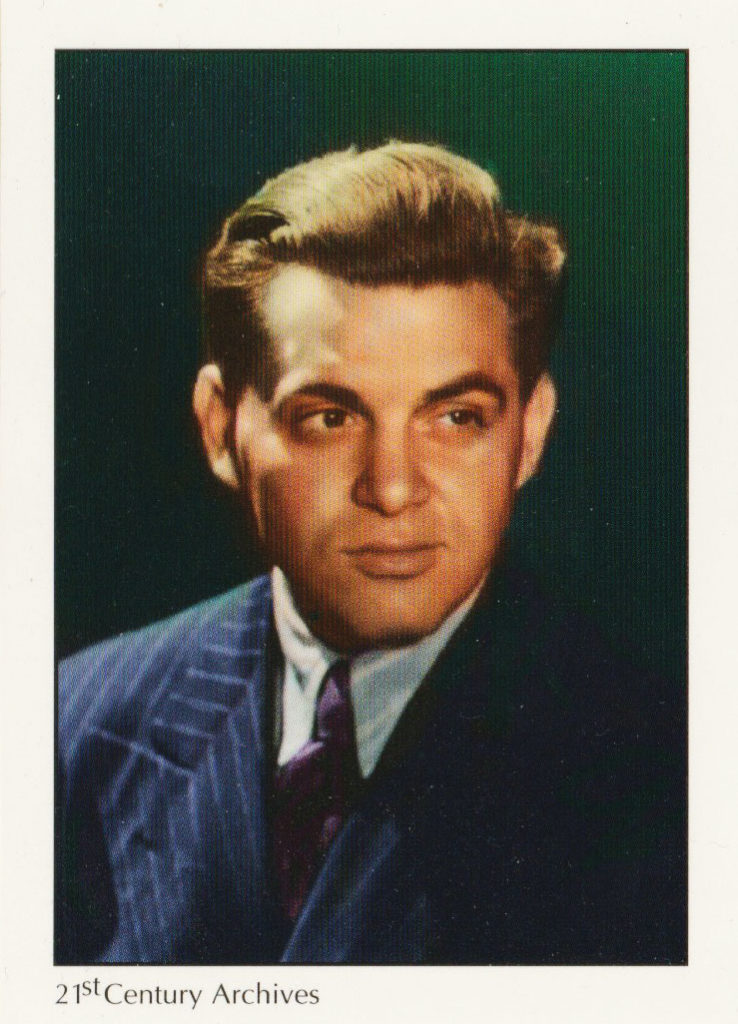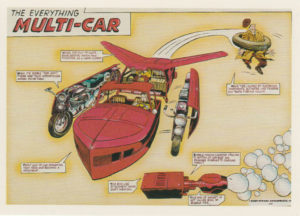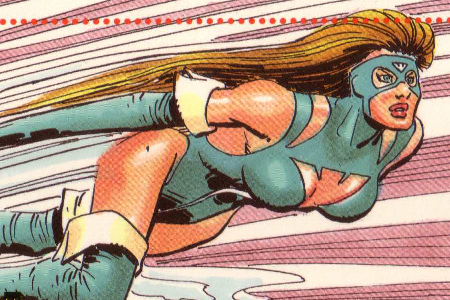
The miracle that was Jack Kirby is discussed ad nauseam by comic historians both amateur and professional, but that’s the privilege you get when you’re clever enough to convince people that you’re a comic historian and they should pay you for it. It’s true that Kirby had a hand in creating a vast majority of the most popular comic characters of today and yesterday, and it’s also true that without him, comics would not be the same. He was a man who created entire comic worlds through stories that wove between multiple comics at the same time, maintaining the same ridiculous kinetic energy and unashamed ridiculousness through the innumerable pages he drew every day. Some people are just forces of nature, and Kirby was one of them.
What’s not discussed quite as often are Jack Kirby’s terrible ideas. Buried among Galactus and Super-Adaptoid are gems like Abner Little, the tiny man who adventured with an off-brand Black Panther, searching for magical golden frogs and accidentally releasing a space alien from the future in the process (Black Panther #1, 1971). Kirby’s Black Panther run was so bizarre that they had to retcon it by splitting realities and giving Kirby’s Panther an inoperable brain aneurism to explain his absurd behavior. Look it up – it all starts in Black Panther #35 (2001).

Whether or not this qualifies as a small comic book canon disaster, or something wholly incredible, is debatable. Kirby’s truest strength, even beyond his inexhaustible work ethic and his ability to draw impossible things that still seemed functional (including, but not limited to, his constant use of Aztec machines and his weird version of human anatomy), was his endless supply of ideas. Kirby was a man tapped directly into his id, the most childlike desire to explore and put everything to paper, no matter how good or bad that thing might turn out. Many people credit Kirby for being a next-level genius, playing some kind of sixth-dimension Jenga with his ideas and characters, but the essence of Kirby is the opposite. Nearly everything we see is Kirby just letting his id flow unchecked through his well-trained pen and who-gives-a-shit, everything-is-magical attitude. Kirby was instinctive, and in his own words, “looking for the awesome.”
So, what’s left over, after the hundreds of hugely popular Marvel and DC comic characters Kirby created? It turns out there’s a whole lot, including countless abandoned concepts for comics and TV shows. Every year, more previously-unseen Kirby works seem to turn up from his own archives, personal collections, or the long-locked file cabinets of production studios. They’re collected in magazines, books, and occasionally even turned into action figures, like Super 7’s Lord of Light pseudo-Galactus figure set. And at least two set of Jack Kirby trading cards, completely full of forgotten and lost projects, both released in 1994, the year of his death.

Jack Kirby: The Unpublished Archives was published by Comic Images, and includes 90 cards of art Kirby created for Ruby-Spears as production art for cartoons that never were made, presumably sketched out at around the same time he was working on designs used in Thundarr the Barbarian. Historically, this was also a time when Kirby was reportedly unhappy with the restrictions placed on him by Marvel, so it’s clear in The Unpublished Archives that Kirby truly let loose with everything Marvel wouldn’t let him do. By card #2, we see designs for a team of heroes called Roxie’s Raiders, which include an outback adventurer with giant hands. His name? Big Hands.
Kirby’s Video Rangers were a kind of reverse-Captain N, in which heroes from an arcade cabinet come into reality to help save the day, thanks to a plucky teen. Earth Blasters was just going to be a series about subterranean cavemen with amazing technology riding giant, destructive worms. Heroes and villains are equally grotesque and beautiful; bad guys reform and do good, good guys are transformed into monsters. But, in Kirby’s vision, there are (again in his own words) “monsters you could live with.”
And it’s clear that a disproportionate number of Kirby’s unused ideas and designs were just ideas for toys he wanted to play with. The MicroMites were tiny heroes built in toy-sized molds with a special plastic, like superheroic Creepy Crawlers. Cassette Man, some kind of terrifying robot Teddy Ruxpin, seems designed to sell different tapes to activate different abilities, or maybe just play Salty Dog albums. Cars that pop apart into twin motorcycles, and gloves with dozens of handy attachments are just some of the toys we’ll never get to play with. 90 cards, hundreds of tiny ideas packed into every page, and according to an interview with the production company in the New York Times, there are at least 500 more production boards that they planned to make public as late as 2010. As of 2018, nothing significant has been released beyond these trading cards. History weeps.
The second set of cards released in ’94 was a 50-card set just called Comic Art Tribute to Joe Simon & Jack Kirby, which doesn’t even give the man top billing. The set is an eclectic collection of biographical information, unreleased sketches only recently completed by other artists, and tiny reprints of semi-obscure Kirby covers and comic projects, all of which fall outside of his familiar DC and Marvel works.

Just like before, it’s a collection of ideas that are both wonderful, and better off dead; Asian sidekicks named Wing Ding and The Ginza Gonniff, a boy explorer named Gashouse, a short-run comic called Race for the Moon co-starring Sgt. Beefy Brown. But amid these are beautiful paintings of complicated, meaningless robot-headed weirdos and powerful warriors, and a painting the Kirby felt represented humanity and should have been sent into space. And, though no one knows for sure what his intent was, we also have Kirby’s design for a bat-like hero standing on a rooftop, quite possibly his casual sketchbook re-design of Batman, perhaps the most revelatory card in the set.
Full-sized reproductions of any of these are hard to find, and the card text doesn’t drop a ton of hints about which magazines these images may have been featured in, or rejected from, so the hunt for frame-able Kirby stuff continues.

It’s hard not to get excited about Kirby once you really get into his influence, his energy, and his strangeness. At the end of the day, Kirby maintained that he was there to sell comics, or in this case, he’d probably be happy that he was selling trading cards. That’s reason enough to add these to your card collection. As an added bonus, the card set starts off with a great picture of a young Jack Kirby, just perfect to frame and display right behind your comic hero action figures. Chances are he created most of them.

 C. David is a writer and artist living in the Hudson Valley, NY. He loves pinball, Wazmo Nariz, Rem Lezar, MODOK, pogs, Ultra Monsters, 80s horror, and is secretly very enthusiastic about everything else not listed here.
C. David is a writer and artist living in the Hudson Valley, NY. He loves pinball, Wazmo Nariz, Rem Lezar, MODOK, pogs, Ultra Monsters, 80s horror, and is secretly very enthusiastic about everything else not listed here.


























